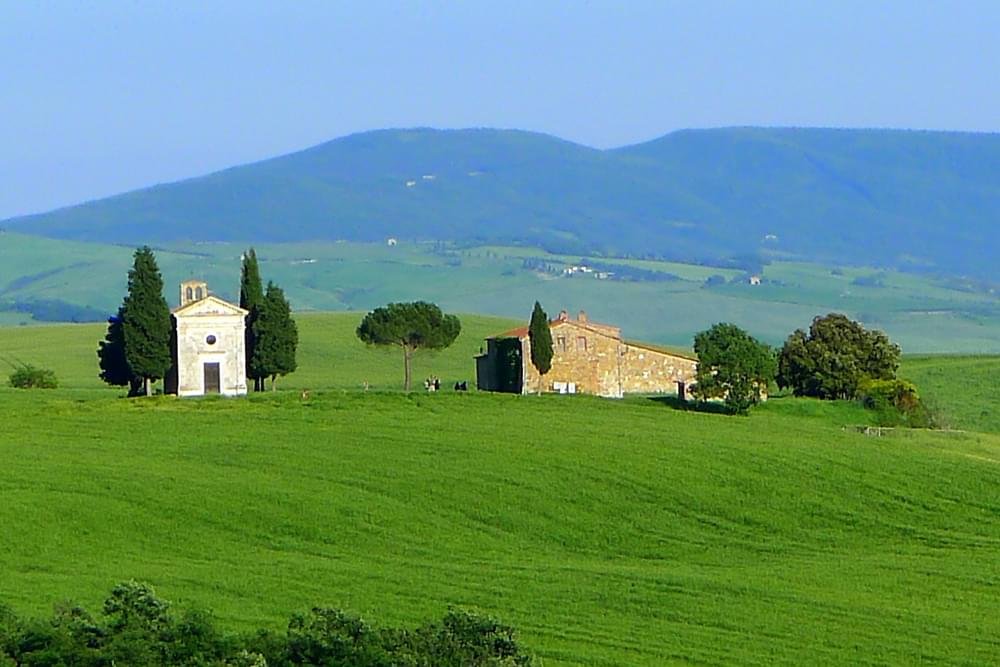
The province of Siena, located in the heart of Tuscany, is one of Italy’s most iconic and evocative regions. It is a land of undulating hills, cypress-lined roads, fortified hilltop towns, and endless vineyards that have shaped the soul of Tuscany for centuries. Yet beyond its postcard-perfect beauty lies a living, breathing region full of history, tradition, and cultural richness.
While the city of Siena draws thousands each year with its stunning architecture and famous Palio, the wider province offers an even deeper immersion into Tuscany’s heritage. From the storied landscapes of the Val d’Orcia to the vineyards of Chianti and the medieval charm of small towns, every corner of the province invites exploration.

The Val d’Orcia is one of the most famous and photographed areas in Italy. Recognized as a UNESCO World Heritage Site, it offers a landscape that seems lifted from a Renaissance painting. Rolling fields, rows of cypress trees, isolated stone farmhouses, and hilltop towns define its look, and the golden light at sunset turns the hills into something almost magical.
Within the Val d’Orcia, towns such as Pienza, San Quirico d’Orcia, and Montalcino offer rich history, stunning views, and exquisite food and wine. Pienza is known for its Renaissance architecture and pecorino cheese, while Montalcino is the birthplace of Brunello, one of Italy’s most esteemed wines. Walking through this area feels like stepping into a dream.
The northern part of the province includes the Chianti Senese, a sub-region of the larger Chianti wine area. This is a place where vineyards climb the hillsides, olive groves cover the valleys, and stone castles overlook winding roads. The wines here, especially Chianti Classico, are famous worldwide for their elegance and structure.
Villages like Castellina in Chianti, Radda, and Gaiole offer not only great wine but also warm hospitality, scenic drives, and a rich mix of history and tradition. Wine estates welcome visitors for tastings and tours, offering the chance to meet the winemakers and learn about the land that produces such legendary wines.
South of Siena, the landscape becomes more dramatic and almost surreal in the Crete Senesi, an area characterized by clay hills and barren ridges. The terrain here is less green and more sculptural, with deep gullies, gray soil, and solitary farmhouses perched on dramatic hills. It is sometimes called Tuscany’s desert, and its beauty lies in its rawness.
This area includes towns like Asciano and Buonconvento, which offer a rustic, down-to-earth charm. The Abbey of Monte Oliveto Maggiore, located in the midst of these hills, is a spiritual and architectural masterpiece surrounded by silence and nature. For travelers seeking unusual beauty, this part of the province offers a striking contrast to the lush vineyards nearby.
Montepulciano is one of the jewels of the province of Siena, a Renaissance hill town perched above the Val di Chiana. It is known for its refined architecture, elegant piazzas, and its robust Vino Nobile di Montepulciano. The town’s noble history is evident in its grand palaces and centuries-old wine cellars carved beneath the streets.
Walking through Montepulciano reveals layers of cultural and culinary tradition. Historic cantinas offer wine tastings alongside cold cuts and pecorino cheese, while local craftsmen still produce leather goods, ceramics, and woodwork. The town is also a cultural hub, hosting music festivals and historical reenactments that bring its history to life.
The province of Siena is also known for its spiritual landmarks, many of which are set in remote and tranquil locations. The Abbey of Sant’Antimo near Montalcino is one of the most beautiful Romanesque churches in Italy, surrounded by olive trees and vineyards. Its ancient stones and peaceful setting create an atmosphere of deep serenity.
Another important site is the Abbey of San Galgano, famous for the ruined Gothic church with no roof and the legendary sword in the stone housed in a nearby chapel. These sacred places tell stories of devotion, myth, and timeless architectural beauty, adding a spiritual dimension to the region’s appeal.
The culinary heritage of the province of Siena is deeply tied to the land. Seasonal ingredients, simple preparations, and bold flavors define the cuisine. Local specialties include pici pasta with garlic sauce or ragù, wild boar dishes, truffle-infused recipes, and hearty soups like ribollita and acquacotta. Tuscan bread, unsalted and rustic, is a staple on every table.
Desserts such as panforte, ricciarelli, and cavallucci are rooted in Siena’s medieval past, and many are still made according to ancient recipes. Weekly markets in towns and villages offer the freshest produce, cheeses, and meats, while traditional festivals celebrate everything from olive oil and chestnuts to saffron and artisan crafts.
Tradition is a living part of life in the province of Siena. The most famous event is the Palio di Siena, a thrilling horse race held twice a year in the Piazza del Campo. But many smaller towns also have their own medieval celebrations, complete with costumes, tournaments, and parades that reflect centuries-old customs.
Events such as the Bravio delle Botti in Montepulciano, where barrels are rolled through the streets in competition, or the Sagra del Tordo in Montalcino, a festival with archery contests and historical pageantry, show how deeply the people of this province connect with their history. These experiences offer visitors a chance to witness tradition in action.
The province of Siena captures the essence of Tuscany in every sense. Its beauty is not only visual but also emotional, rooted in its harmonious landscapes, rich heritage, and enduring traditions. Each town and valley offers a unique story, and the warmth of its people makes visitors feel welcome in even the smallest village.
Whether you are drawn by art, wine, food, nature, or history, the province of Siena provides a complete and unforgettable Tuscan journey. It is a place that speaks softly yet deeply, where the past lives in the present and every stone tells a tale. For those seeking the soul of Tuscany, this is where it truly beats.
>
More Details



